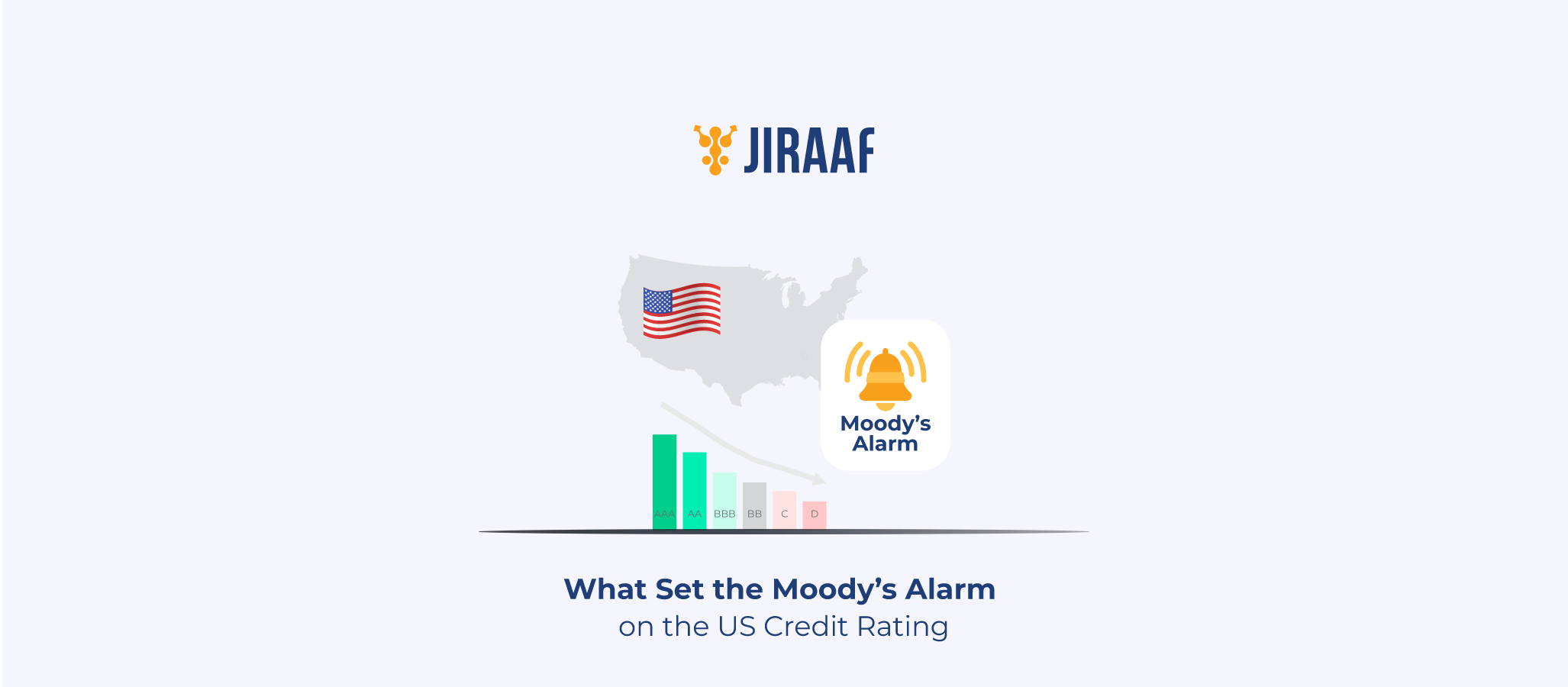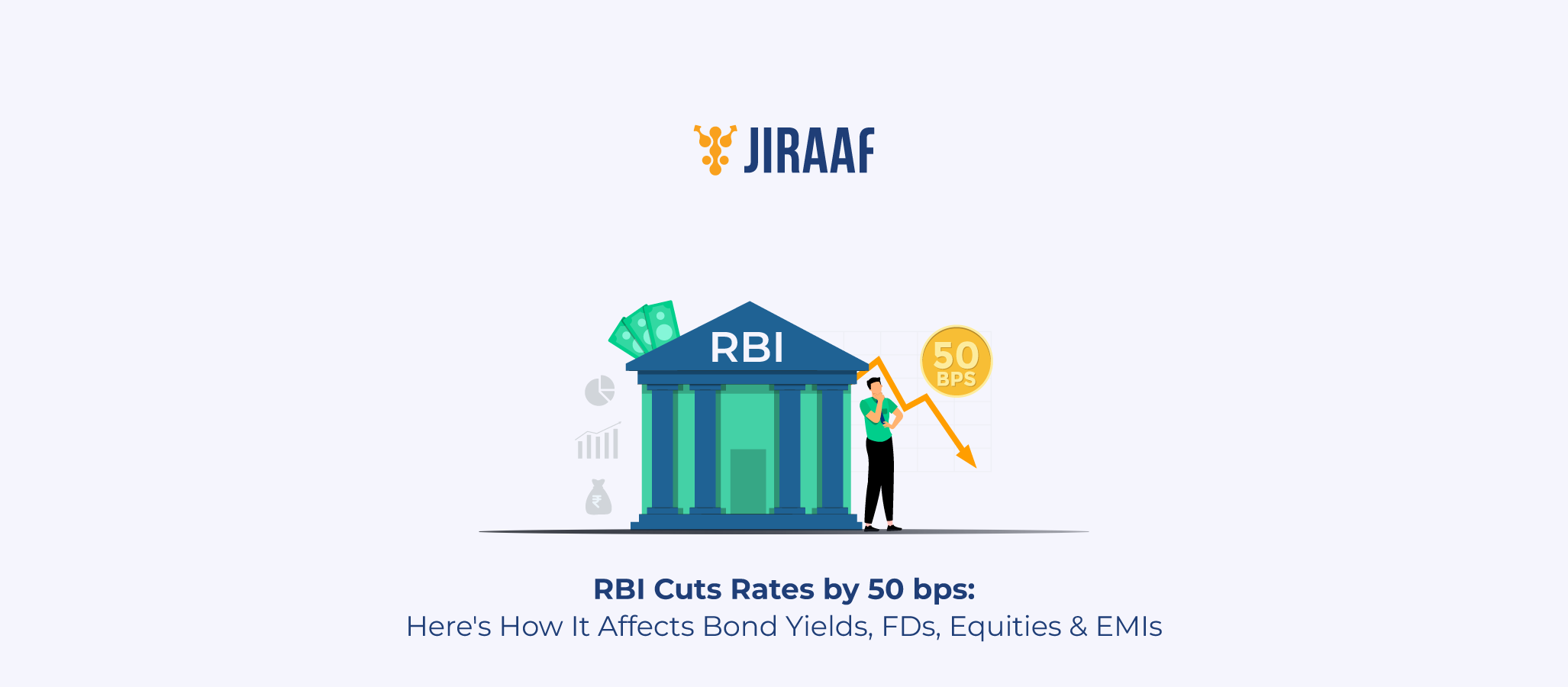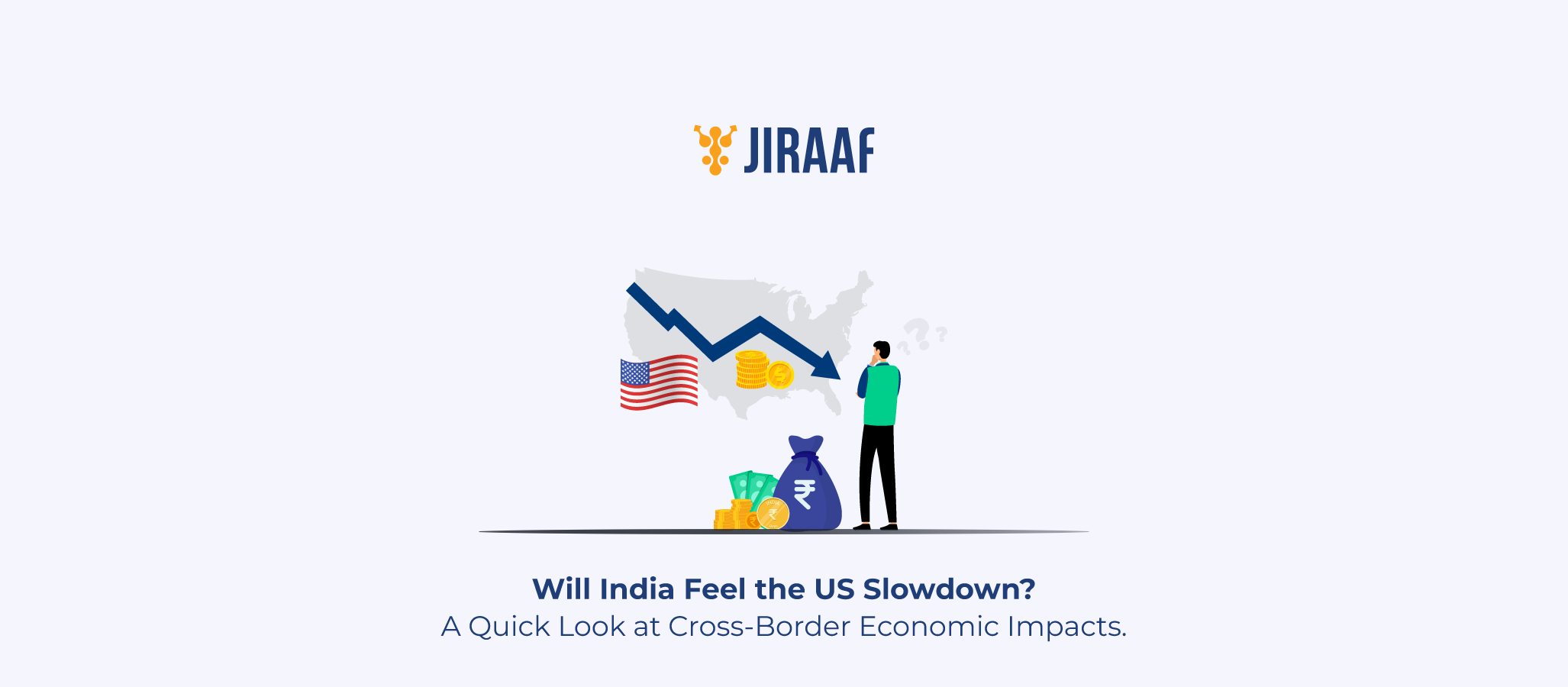A Downgrade with Global Echoes
In May 2025, a warning bell rang through global financial circles: Moody’s downgraded the United States’ long-term sovereign credit rating from Aaa to Aa1 — the first such move by the agency since 1917. This decision follows earlier downgrades by S&P in 2011 and Fitch in August 2023, making Moody’s the last of the “Big Three” agencies to strip the US of its top-tier status. Each agency has different timing and criteria, but all point to the same concern: America’s rising debt and inability to reduce it. This downgrade is particularly significant because Moody’s had historically maintained the highest level of confidence in U.S. fiscal reliability.
The downgrade cited ballooning debt levels, which have surpassed $36 trillion, and persistent fiscal deficits.
In a world that still hinges on the dominance of the US dollar and US Treasuries, such moves carry disproportionate weight. They don’t just reflect investor anxiety; they amplify it.
For Indian investors — particularly those interested in the bond market — these changes are more than headlines. They’re signals that influence capital flows, interest rates, foreign exchange trends, and even the returns on domestic corporate bonds. As global winds shift, it becomes essential to understand how the US rating decision by Moody’s may cascade through the global and Indian financial ecosystems.
Let’s unpack the story behind the downgrade and explore its wider consequences.
Why Did Moody’s Sound the Alarm?
Moody’s decision to downgrade the U.S. credit rating in May 2025 wasn’t just a symbolic step — it was a culmination of deep-rooted concerns about America’s fiscal direction. The downgrade, from Aaa to Aa1, marks a new chapter in global credit markets, with implications that go far beyond the United States.
Mounting Fiscal Pressure
The US economy has experienced sustained and growing fiscal deficits since the pandemic. In fiscal year 2024, the federal deficit reached $1.9 trillion, and the total public debt surpassed $36 trillion, amounting to approximately 124% of GDP—a level that raises concerns even for the world’s largest economy – the US economy.
Moody’s cited the ongoing lack of a credible fiscal consolidation plan as one of its chief concerns. Long-term projections suggest debt could reach 134% of GDP by 2035, a trajectory that raises red flags for sovereign risk. The interest burden, too, is rising rapidly due to higher interest rates and frequent debt refinancing.
A critical driver is tax policy. The possible extension of the 2017 tax cuts could add another $4 trillion to the deficit over the next decade. As Moody’s stated in its commentary: “We do not believe that material multi-year reductions in mandatory spending and deficits will result from current fiscal proposals.”
Political Dysfunction
US politics has entered an era of gridlock. In just the past two years, the country has faced multiple near-shutdowns and tense debt ceiling negotiations. Moody’s emphasized that “political polarization” is now a material risk, potentially impeding the government’s ability to respond in times of fiscal or economic stress.
Slower Growth and Sticky Inflation
While the US economy posted decent growth in early 2024, momentum slowed by mid-year. Inflation, although down from 2022 highs, remains sticky at 3.2% — still above the Fed’s 2% target. Higher-for-longer interest rates have added strain on both consumers and the government’s borrowing cost.
Broader Expert Perspective on US Fiscal Risks
Although not made in direct response to Moody’s May 2025 downgrade, leading voices in economics have long warned about the dangers of political stalemates and rising deficits in the United States.
- Mark Zandi, Chief Economist at Moody’s Analytics, has previously noted: “The problem isn’t that the US can’t pay its debts — it’s that it may not choose to, or may do so inefficiently due to political stand-offs.”
- Larry Summers, Former US Treasury Secretary, has remarked: “This isn’t a surprise. It’s a reflection of political dysfunction and fiscal myopia that has gone on too long.”
These views reinforce the rationale Moody’s cited in its downgrade: that the U.S. faces not just fiscal challenges, but also growing uncertainty around the political will to address them.
It’s Not Just a Rating — It’s a Red Flag
In essence, Moody’s isn’t questioning the US’s ability to pay — it’s questioning its willingness and long-term governance structure. And that perception matters just as much to markets.
In today’s tightly woven global financial system, perceptions of stability drive capital flows, impact risk premiums, and influence policymaking across the board.
Up next, we look at how the US bond market — the largest in the world — has responded, and what it means for investors globally.
Ripple Effects in the US Financial Market
Moody’s downgrade has triggered ripple effects across asset classes in the US. While not entirely unexpected, the formal announcement added fresh volatility to markets already coping with high interest rates, sticky inflation, and slowing growth.
Bond Market Jitters
US Treasury yields, which had remained relatively steady in early 2025 amid the Federal Reserve’s pause on rate changes, rose sharply following Moody’s downgrade. The 10-year yield briefly touched 4.56% — its highest point in several months — before settling back into the 4.4–4.5% range.
This sudden movement was driven more by a shift in investor sentiment than by any change in monetary policy. Concerns about long-term debt sustainability, elevated issuance of treasury bonds, and the downgrade’s impact on creditworthiness all contributed to upward pressure on yields.
As yields rose, bond prices fell — especially for longer-duration securities. This led to mark-to-market losses across portfolios, prompting large institutional investors like pension funds and insurance companies to consider rebalancing. In a market already sensitive to inflation and supply-demand imbalances, the downgrade amplified volatility without any actual change in interest rates.
Equity and Currency Markets Reaction
US equity indices showed a mixed response. While tech stocks initially declined on fears of prolonged high rates, value and financial stocks saw some support. The US Dollar Index (DXY) also rose briefly as a safe-haven move, but the longer-term trajectory remains under debate.
Increased Cost of Borrowing
As the US government now faces rising interest costs on new borrowings, there are concerns over future fiscal space. This could reduce funding for social programs and infrastructure — eventually impacting GDP growth potential.
Global Spillover
Given the US dollar’s role as the reserve currency and Treasuries’ central role in collateral systems globally, the spillover effects are far-reaching:
- Emerging Markets (EMs): EM currencies, including the Indian Rupee, came under temporary pressure.
- Capital Flows: Higher US yields often attract global capital, leading to outflows from EM bond markets.
- Corporate Credit: Higher US risk premiums can push up global corporate borrowing costs, especially for firms with USD-denominated debt.
Historical Parallels
During the 2011 downgrade by S&P, similar concerns about debt ceilings and fiscal indiscipline led to a market-wide correction. While yields dropped then due to a flight to safety, today’s inflationary backdrop and aggressive Fed policy are creating the opposite effect — rising yields and widening credit spreads.
Key Takeaway
The downgrade reflects long-term fiscal pressure, not short-term default risk. But its symbolic importance, coupled with the real impact on rates and credit costs, ensures it will influence global investment strategies — including those of Indian investors.
What It Means for India — Risks and Opportunities
For Indian markets, the downgrade has been a mixed bag — presenting both challenges and silver linings. Let’s break it down.
Currency Volatility and Portfolio Flows
The INR showed slight appreciation following Moody’s downgrade of the US credit rating, closing at around ₹85.40 per US Dollar by May 19, 2025. This movement was supported by a softer US Dollar and declining global crude oil prices. Although there was a brief phase of cautious foreign portfolio activity — with FPIs turning net sellers in Indian debt markets for a few sessions — the flows stabilized quickly, helped by India’s resilient macroeconomic fundamentals and the upcoming inclusion in the JP Morgan GBI-EM Global Index (effective June 2025).
Indian Bond Market Reactions
Contrary to popular belief, the Indian bond market has been relatively resilient. Benchmark 10-year G-Sec yields have remained in the 7.0–7.1% band. This stability is due to strong domestic demand, contained inflation (now hovering around 4.8%), and two RBI rate cuts in 2025, reversing its earlier tightening bias.
Corporate bonds — particularly AAA & AA-rated papers — continue to see robust investor interest.
What’s driving the demand?
- Higher real yields (vs. inflation)
- Anticipation of more rate cuts
- Strong credit fundamentals in the top-rated corporate universe
RBI’s Strategic Response
The RBI has cut rates twice in 2025, signalling confidence in inflation moderation and aiming to support growth amid global uncertainty. This dovish stance has been a welcome move for debt investors, enhancing bond prices and reinvigorating demand.
What Should Indian Investors Watch?
- US Yield Trends: A sustained rise in US yields may keep FPI flows volatile.
- Rupee Dynamics: Any sharp INR depreciation can prompt RBI action, impacting bond yields.
- Crude Oil Prices: India’s inflation and fiscal metrics remain sensitive to oil shocks.
Opportunities in Indian Corporate Bonds
While the global narrative might feel dominated by uncertainty, India’s corporate bond segment offers a far more optimistic picture — particularly for investors looking to balance risk and return in a volatile world.
Here’s what investors are discovering:
- Attractive yields in short and medium-duration bonds, especially those rated A+ and above
- Greater stability compared to equity in volatile macro environments
- Tax efficiency when structured correctly (particularly through listed NCDs held for over 1 year)
- Improved secondary market liquidity due to rising demand and digital participation
Access Has Never Been Easier
Historically, retail participation in bonds was limited by access, documentation hurdles, and lack of liquidity. That’s changing rapidly. The rise of SEBI-regulated online bond platforms has democratized fixed-income investing.
These platforms now enable retail investors to:
- Browse and compare a wide range of bonds — including corporate, PSU, perpetual, and tax-free bonds
- View live yields, credit ratings, maturities, and other key risk metrics in real-time
- Transact digitally with verified settlement systems and KYC-enabled onboarding
- Explore curated bond baskets, SIP-like features, and reinvestment tools
By making bond investing more accessible, transparent, and convenient, these platforms are helping investors treat fixed income not just as a safe haven — but as a strategic, income-generating core of their portfolio.
Conclusion: A Caution, but Also a Call
Moody’s downgrade of the US credit rating is not a one-off event. It’s a manifestation of deeper shifts in global finance — fiscal fatigue, political dysfunction, and a recalibration of interest rate regimes. These shifts don’t just impact America; they cast ripples across oceans.
For Indian investors, especially those considering fixed-income products, this is both a caution and an opportunity. While volatility remains a reality, India’s economic fundamentals, supportive central bank, and improving global standing offer a solid backdrop.
In such a scenario, corporate bonds — especially those rated A and above — provide an avenue for steady, predictable returns without the gut-wrenching volatility of equities. And with digital platforms now making them easier to access and evaluate, the barriers to entry are fast disappearing.
As always, diversification, credit quality analysis, and duration planning remain key. But if ever there was a time to reconsider fixed-income as an anchor in your portfolio, it’s now.
Discover fixed income investments with Jiraaf, a SEBI registered online bonds platform that educates and brings access to a wide array of bonds. Sign up today to explore diversified fixed income investment opportunities to support your goal-based wealth creation journey. Start investing!



